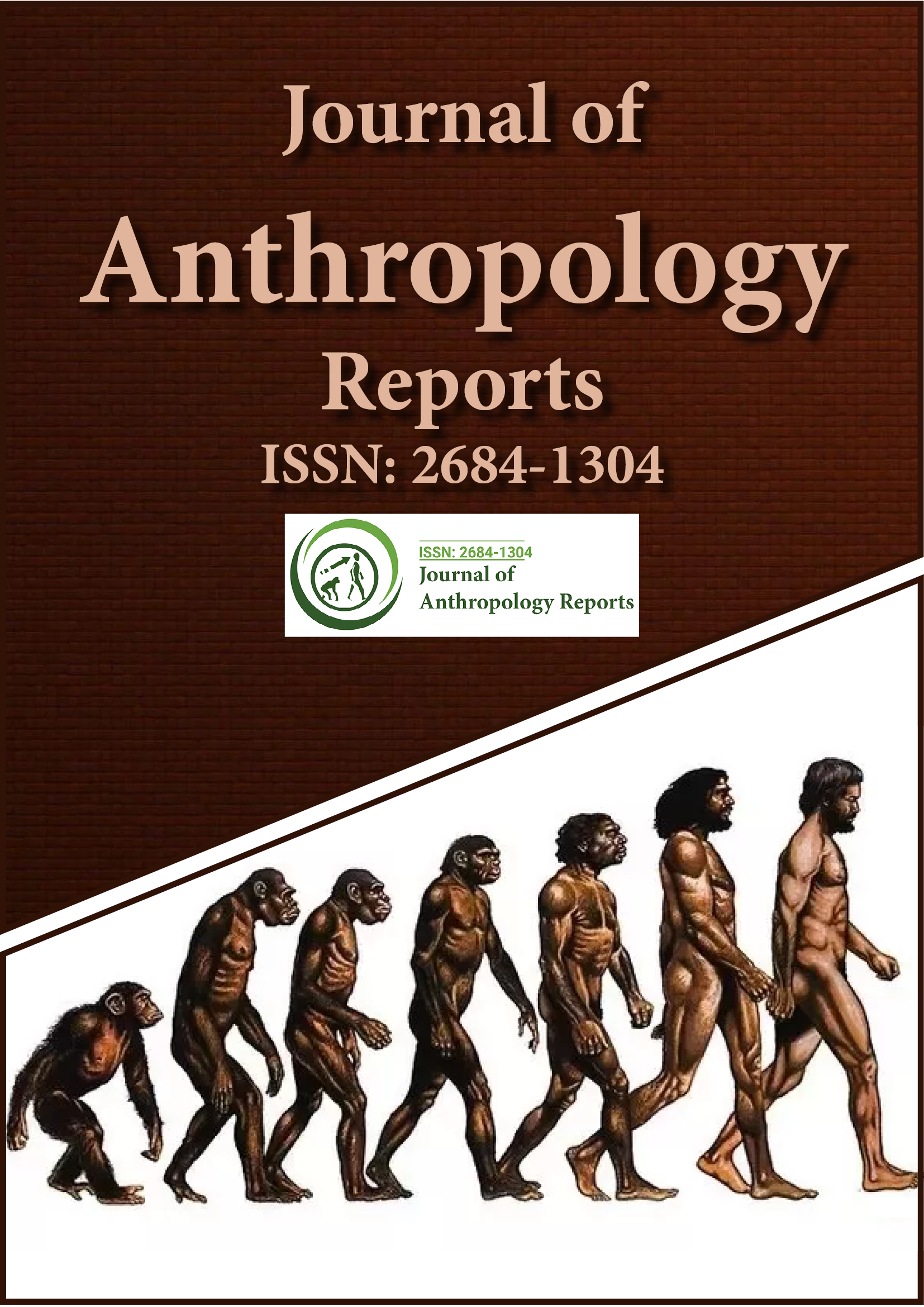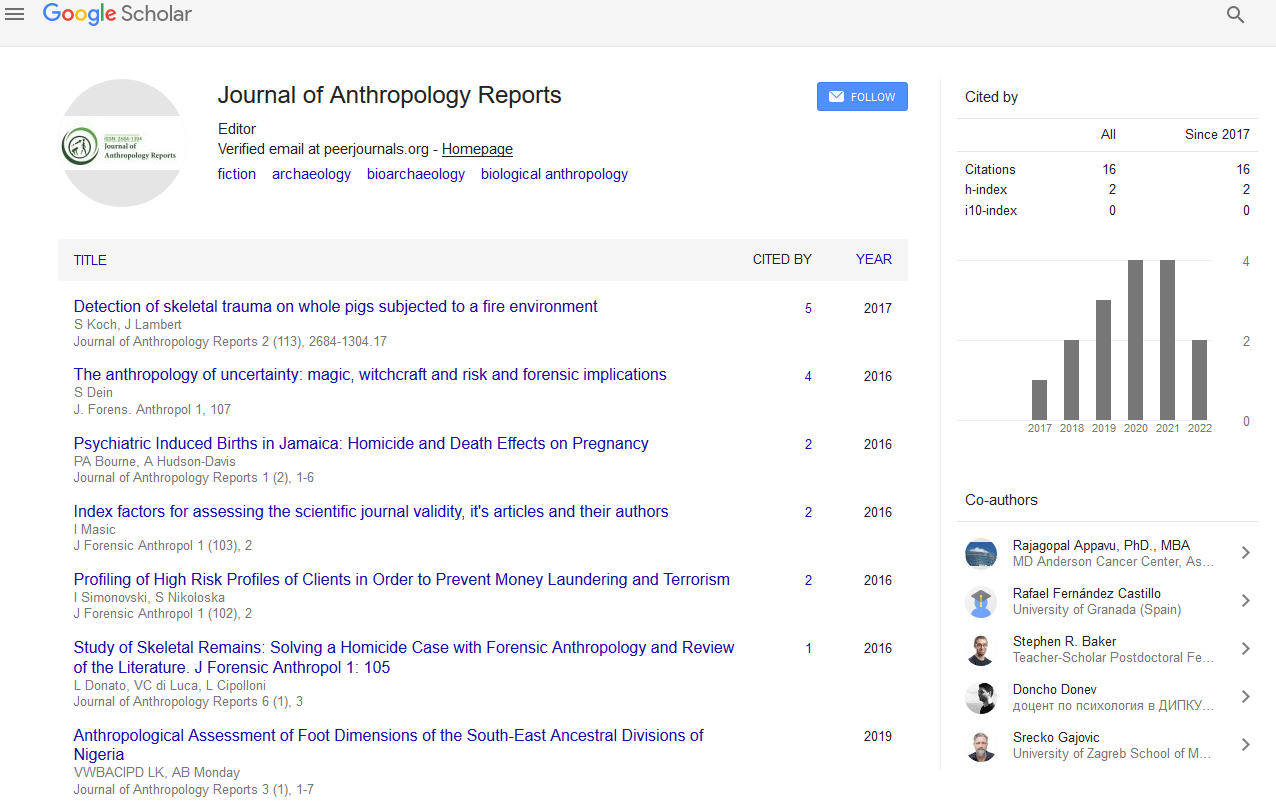Indexed In
- RefSeek
- Hamdard University
- EBSCO A-Z
Useful Links
Share This Page
Journal Flyer

Open Access Journals
- Agri and Aquaculture
- Biochemistry
- Bioinformatics & Systems Biology
- Business & Management
- Chemistry
- Clinical Sciences
- Engineering
- Food & Nutrition
- General Science
- Genetics & Molecular Biology
- Immunology & Microbiology
- Medical Sciences
- Neuroscience & Psychology
- Nursing & Health Care
- Pharmaceutical Sciences
Commentary - (2024) Volume 7, Issue 3
Environmental Interactions: The Role of Epigenetics in Cultural Adaptation
Laura Kendall*Received: 30-Aug-2024, Manuscript No. JFA-24-28377; Editor assigned: 02-Sep-2024, Pre QC No. JFA-24-28377 (PQ); Reviewed: 16-Sep-2024, QC No. JFA-24-28377; Revised: 23-Sep-2024, Manuscript No. JFA-24-28377 (R); Published: 30-Sep-2024, DOI: 10.35248/2684-1304.24.7.202
Description
The intersection of genetics and cultural anthropology provides an interesting method for investigating the evolutionary roots of human culture. Culture, often described as the foundation of human uniqueness, encompasses a range of behaviors, traditions and innovations that define societies. Understanding the genetic underpinnings of the capacity for culture has become a key area of inquiry, connecting biology and anthropology to uncover the evolutionary mechanisms that enabled humans to develop complex cultural systems.
The capacity for culture is not merely an emergent property of the human brain but likely a product of evolutionary pressures that shaped our species over millennia. The interplay of genetic, environmental and social factors is central to this capacity and identifying the genetic components that contribute to cultural behavior offers a compelling challenge. Genes related to cognitive abilities, social bonding, language acquisition and problem-solving are believed to play a significant role in enabling cultural behaviors, yet the pathways through which these genes manifest in cultural phenomena remain elusive.
One of the most intriguing aspects of this field is the notion of gene-culture coevolution. This concept suggests that genetic changes and cultural developments influence each other in a dynamic feedback loop. For example, the development of tools, agriculture and social hierarchies likely exerted selective pressures on cognitive and behavioral traits, reinforcing genetic variations that favored cultural innovation. Similarly, the genetic predispositions that enhance social cooperation, learning and communication have likely facilitated the transmission and refinement of culture.
Studies of specific genetic markers provide valuable insights into this relationship. The FOXP2 gene, often referred to as the "language gene," has been associated with the evolution of speech and language capabilities in humans. Variants of this gene are thought to have contributed to the development of linguistic complexity, a foundation of cultural expression. Other genetic factors, such as those related to neural plasticity and memory, also play an important role in the ability to acquire, retain and transmit cultural knowledge across generations.
While genetic predispositions provide a foundation for cultural capacity, the influence of the environment and social structures cannot be overlooked. The plasticity of human behavior, shaped by genetic-environmental interactions, allows individuals to adapt to diverse cultural contexts. This adaptability underscores the importance of considering epigenetic factors, such as how environmental influences can alter gene expression, in understanding the origins of culture.
Cross-disciplinary approaches are essential to advancing this field. The integration of genetic studies with insights from archaeology, linguistics and anthropology offers a comprehensive framework for investigating the genetic basis of culture. For example, examining genetic data from ancient populations alongside archaeological evidence of cultural practices can reveal how genetic changes coincided with cultural milestones such as tool-making, art and ritual.
Moreover, the study of non-human primates provides a comparative perspective on the evolution of cultural traits. Observations of tool use, social learning and communication in primates suggest that the roots of cultural behavior predate the emergence of Homo sapiens. Comparative genomics can help identify genetic similarities and differences between humans and other primates, shedding light on the unique genetic adaptations that underpin human culture.
Despite these advancements, significant challenges remain. Culture is an inherently complex and dynamic phenomenon, making it difficult to isolate specific genetic factors that contribute to its emergence. The influence of cultural practices on genetic evolution further complicates this task, as the two are deeply intertwined. Additionally, ethical considerations surrounding genetic research on human behavior must be addressed to ensure responsible scientific practices and prevent misinterpretations or misuse of findings.
In conclusion, developing a genetic model for the origin of the capacity for culture represents an innovative step in understanding human evolution. By clarifying the genetic, environmental and social factors that converge to form cultural behaviors, this research has the potential to uncover the biological roots of humanity's most defining characteristic. The genetics of cultural anthropology not only deepens our knowledge of the past but also informs our understanding of the future, as cultural adaptation continues to form human societies in this interesting world.
Citation: Kendall L (2024). Environmental Interactions: The Role of Epigenetics in Cultural Adaptation. J Anthropology Rep. 7:202.
Copyright: © 2024 Kendall L. This is an open-access article distributed under the terms of the Creative Commons Attribution License, which permits unrestricted use, distribution, and reproduction in any medium, provided the original author and source are credited.

